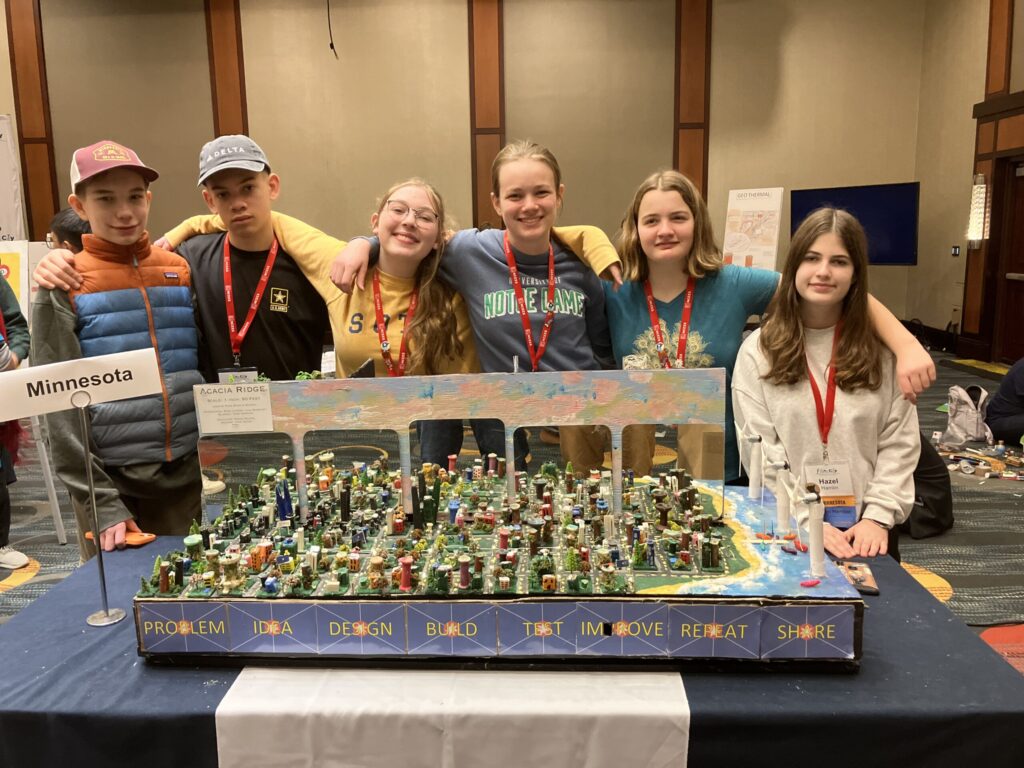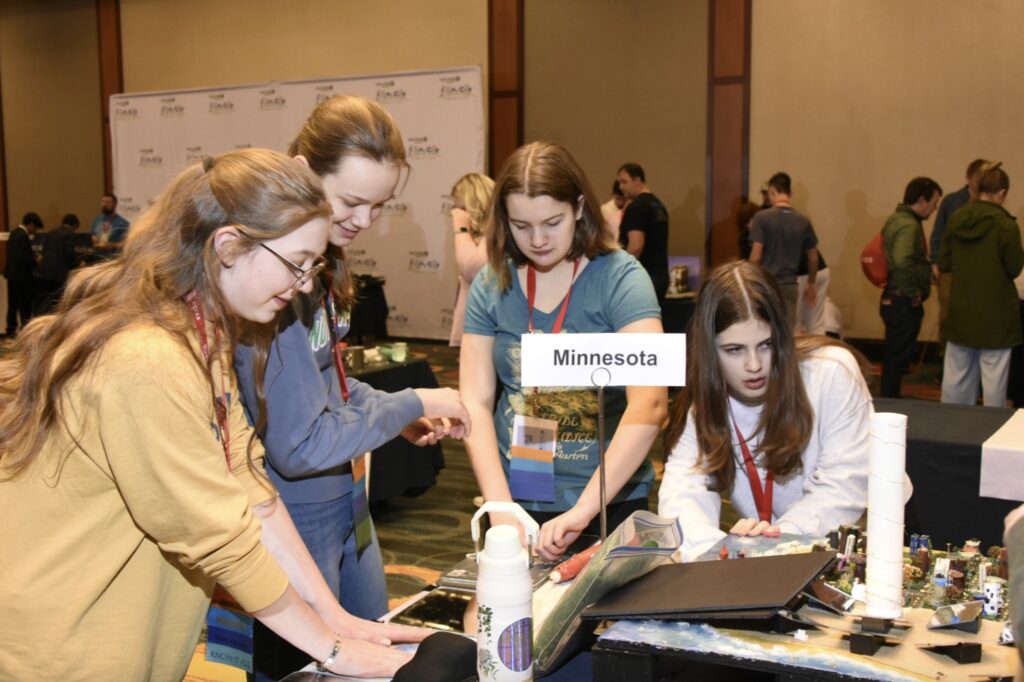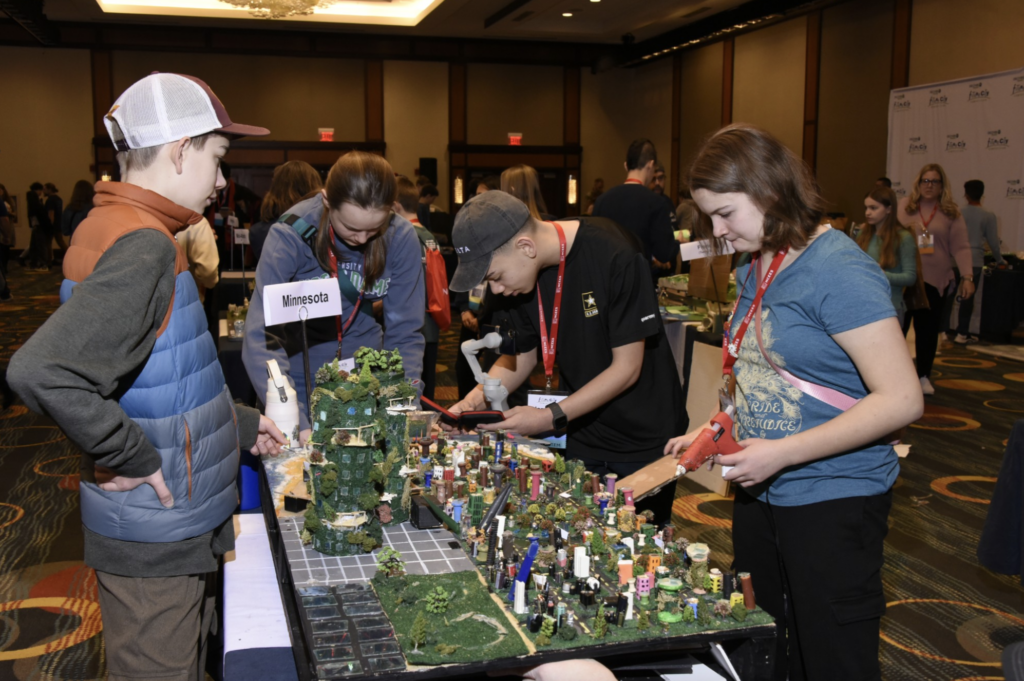Xplorlabs and Future City: Two Programs, One Goal
Xplorlabs Educator Fellow Travis Koupal shares how using Xplorlabs alongside the DiscoverE Future City competition has shaped his teaching.
Posted
August 7, 2024
;)
Xplorlabs Educator Fellow Travis Koupal shares how using Xplorlabs alongside the DiscoverE Future City competition has shaped his teaching.
August 7, 2024
;)
September 2010: I’ve just started at a new school, and I need to create a “flex” class to be taught every day. I pilot a few ideas, but none really stick with students or myself.
Then, the moment that changed everything — a little postcard in my mailbox, addressed to “Science Teacher” for a program called Future City, a worldwide engineering and city planning competition. Nothing has been the same since.
Fast forward eight years later. My involvement with Future City has not only grown, but I am now in regular communication with Future City’s national office. They tell me about a partnership they have established with UL Research Institutes’ Xplorlabs, which features interactive and immersive safety science lessons and resources. I found out Xplorlabs was seeking Future City educators to act as ambassadors to try these free resources and share their findings with other educators. Excited by what I see in this free safety science education resource, I immediately begin using Xplorlabs in my classroom. Then, COVID happened in 2020.
COVID essentially ended the Ambassador Program, but not my interest in Xplorlabs. I continue to teach Future City and Xplorlabs during and after the pandemic.
Now, we arrive in 2023.
An email inquiring about the old Ambassador Program leads me to the ULRI’s Institute for Research Experiences & Education launching the Xplorlabs Educator Fellowship. I am just beginning to integrate Future City with Xplorlabs for the first time, and the yearlong fellowship seems a fabulous way to make that connection more explicit, concrete, and meaningful. I apply, find myself accepted, and I am ready to get to work in April 2023.
The engagement of middle school students in any topic revolves around one thing: themselves. They need to see how what is being taught benefits and relates to them personally.

That connection to their own lives is easy with Xplorlabs and Future City. One example of this: a battery storage facility being constructed an hour from my students’ home city of Minneapolis. Students saw and understood the need for electrified cities of the future to not only generate power via renewable sources, but to also store that power safely for later use via massive battery arrays. The connection was so apparent that they added a similar facility to their Future City design.
My students also made many connections between the safety science phenomena in Xplorlabs and their day-to-day lives, ranging from the phones in their pockets to the AirPod in their ear (usually only one) to the laptops on their tables. Xplorlabs’ learning topics like the importance of battery safety and responsibly sourced minerals for batteries were also incorporated into their Future City design solutions. In other words, they applied learning to a new situation. This is the gold standard to assess student learning and understanding of content, and they nailed it.
When students incorporated learnings from Xplorlabs into their Future City project, they were able to make connections to their own lives. Students were motivated to question and understand the relationship to their home, neighborhood, and community experiences such as mining operations in northern Minnesota and the Thacker Pass Lithium Mine in Nevada. Through Xplorlabs, students gained greater understanding that there are risks and trade-offs to nearly everything and were also able to understand and articulate lithium-ion power and storage using technical vocabulary from the Xplorlabs pathways.
This one is about me.
Safety science casts a wide net in relation to STEAM content and disciplines. STEAM creates the built world around us, and without safety science, that world becomes infinitely more dangerous. It is one thing for me to see those connections, it is another for students to see them. I did not need to make all those connections explicit — students were even better at making those connections themselves. This superpower of middle school students — to see the world in such a unique way as compared to adults. My work integrating Future City and Xplorlabs was a powerful and enlightening reminder of that superpower. I don’t know why I didn’t use Xplorlabs and Future City in combination long ago. These “a-ha” moments were always there, and I missed them for too long.

Cool Stories, Bro. What Do You Expect Me to Do With All of This?
I know it can be hard to take on something new. After 18 years, trust me I know the game and what it takes to not only survive in the classroom, but also be successful. It took me years of work to find these successes, but that timeline is in no small part because I had to figure it all out myself. You don’t.
Future City and Xplorlabs both contain scaffolds and resources to help guide you on your journey. You can take on as much or as little as you are willing and able to manage, and there is so much room to grow. Don’t just take my word for it: visit FutureCity.org to discover more about Future City, or check out one of the Xplorlabs pathways at Xplorlabs.org to see for yourself.
I guarantee if you incorporate Future City and Xplorlabs into your middle or high school classroom, your class will not only be the “cool, fun class,” but more importantly, a class where your students will be engaged and enriched, and you will be enlightened to what they can do and “show what they know.”
I dare you to prove me wrong.